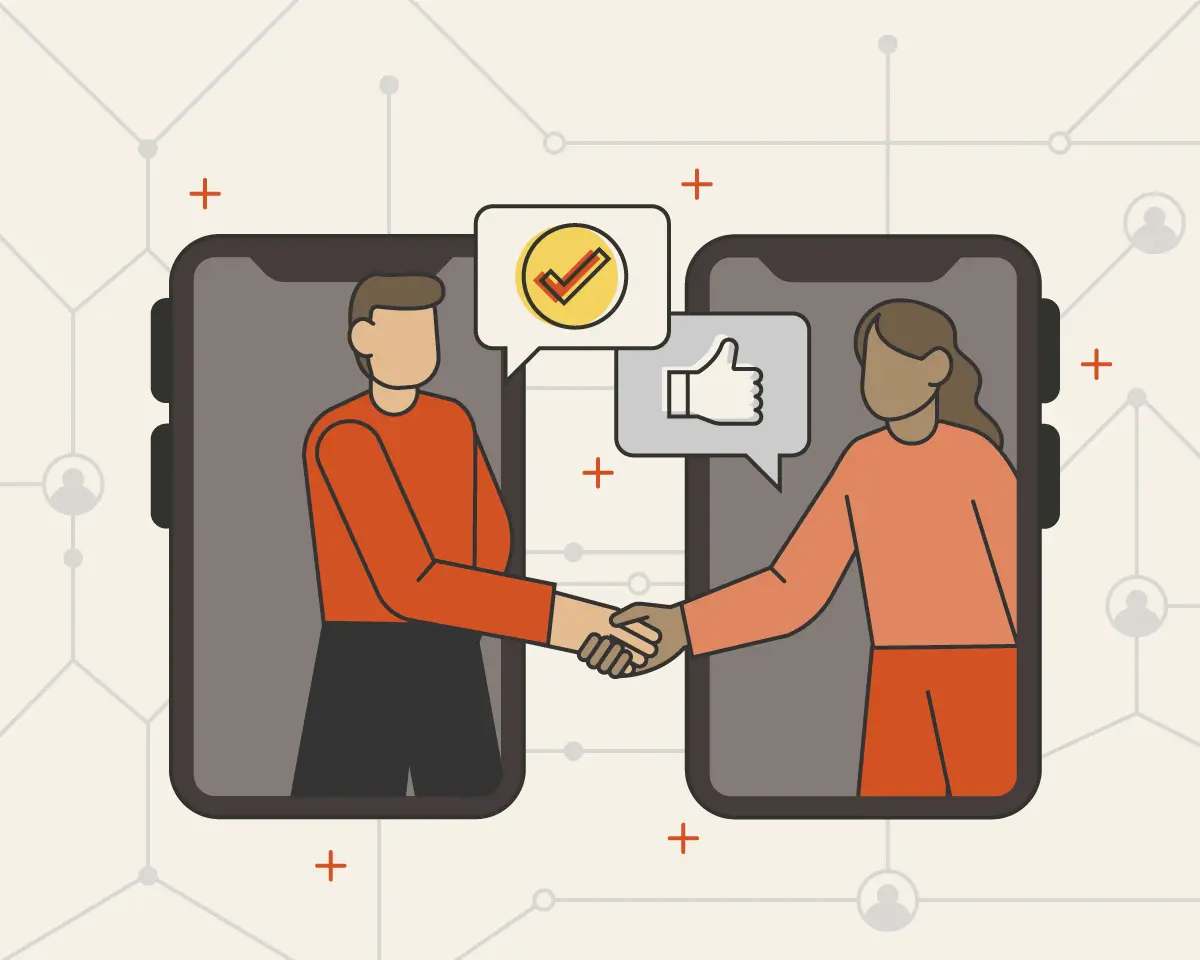Content Personalization: What It is and What Every Marketer Needs to Know About It

Think, for a minute, about the last time you responded to an advertisement or marketing as a consumer. The chances are that it was engaging, informative, and interesting. Content that succeeds in converting viewers into customers tends to be one of these things, if not all three.
A tactic to ensure that more of your content hits this attractive sweet spot comes through content personalization. Let’s consider the main drawback of digital marketing compared to its in-person equivalent. Digital content tends to feel impersonal or generic.
In that sense, it’s the equivalent of having a screen sharing tool instead of a place where two people can meet. It all too often seems to be addressing a crowd rather than an individual. And this is where so many marketing campaigns can fall flat.
Luckily, there are ways that you can tailor your content to be more specific, more niche, and more successful. By personalizing the content you produce to become online personalized recommendations, you’re giving your customer more reason to feel special and to buy what you’re advertising.
We’ll take a look at precisely what the concept of content personalization is as well as some of the data that supports it. We’ll then be sharing some essential tips on how you can get started in personalizing your content. Following this, we’ll explain why you should be bothering in the first place - stats can only tell you so much, after all.
Finally, we’ll look at the available programs and software that enable you to keep track of how your personalized content is performing.
What is it?
Before we explore any of the benefits, pitfalls, or even discuss how to make it work for you, let’s make sure that we’re clear on exactly what content personalization is. As SearchCustomerExperience puts it:
“Content personalization is a strategy that tailors webpages and other forms of content to individual users' characteristics or preferences.”
All too often, content personalization is presented as a B2C-only tactic - a way of improving sales demos and the like. It’s easier to envisage it as a tactic used on general customers rather than business clients.
However, this assumption isn’t backed up by anything other than opinion. If we look at the stats that justify the use of content personalization, we’ll see that it works, regardless of the audience for which audience you’re developing a content strategy.

Content personalization: the statistics
It’s all very well us pitching this idea to you and discussing all the great things that content personalization can achieve. Sometimes, though, hard data is the best way of understanding how necessary any concept is. In this area, content personalization performs well, as you can see below.
For starters, content personalization has dramatically impacted customer expectations. In the early days of internet advertising, it was possible to get away with conveyor belt ads that spoke to everyone and no one at the same time. Today, some 72% of consumers only engage with marketing that speaks to their specific interests.
Factors outside of personalized content have contributed to this. As our online lives have become more complex and complicated, our capacity to accommodate every piece of content thrown at us has reduced. When this is the case, we, as consumers, naturally prioritize in one way or another.
However, the upshot remains the same. Almost three-quarters of your possible audience will only engage with your content if it speaks to them directly. From a B2B point of view, think about how many work-related emails you receive and delete within any given day.
You only end up engaging with messages and content pertinent to your role, performance, or schedule. This inclination shows you should consider personalization when talking to clients, consumers, or customers in the broader population.

Approaching it differently, let’s also consider how marketing professionals look at content personalization. Here too, it performs well in terms of professional marketers finding benefit in investing time and money into the concept.
In fact, according to a 2021 study, email marketers use message personalization as their number one tactic in increasing lead engagement rates. Now, of course, not all of you will be email marketers. The point still stands, though, as the people who engage with email content also likely engage with the types of content you create.
There is no way that, if content personalization didn’t matter, these two statistics would have come to be. If you want an extra stat to keep in your back pocket when arguing the cause, we do have one more for you.
According to McKinsey & Company, personalization increases efficiency by as much as 30% when it comes to marketing spend. So, not only does it meet the consumer needs and speak to how the industry is shifting, but it also helps the finances out by giving you more bang for your buck.
It’s challenging to think why, based on these statistics, anyone would pass on the opportunity to see what benefits content personalization could bring to their business.
Content personalization: how do you do it?
If you aren’t convinced of the benefits of content personalization by now, it’s fair to say that you never will be. And so, if you do see the potential for adopting this concept into your way of working, let’s now take a look at how you can do it. After all, you wouldn’t take the plunge on anything, from a new internet service to a new office telephone system, without taking the time to understand what it is or how it does its job.
As with any business concept, there are ways that will work for you and ways that won’t. So not all these ideas are ones that you should look to adopt. And which one you choose to put in place ultimately depends on how you want to select who to target.
If, for example, you were segmenting your audience regarding personality differences, then persona-specific marketing makes sense. A great way to do this is to use data to build an online representation of your audience. This data helps you find overlapping characteristics in a chunk of your target market. That makes tailoring content to them, perhaps in the form of addressing pain points or language used, much more manageable.
You could also choose to separate your target audience along stage lines. This is something that personalization can help with. Identifying where in the buying journey your client or customer is and then tailoring your content to that reflects the personal service someone would get in a physical store.
It shows that you take note of what they’re after and meet them where they’re at. Similarly, if you have data reflecting intent - the stage before traditional prospecting frameworks identify leads - you could also build that into your personalization strategy.
Another way of personalizing content for a specific group of people is to build personalization into their everyday user experiences with your web content. Customizing account or landing pages or establishing personalized lead magnets and emails that address them by their preferred name are two examples of how this personalization can extend beyond your outbound content.
Finally, and this ties in somewhat to the first point, lead-specific personalization can be effective at generating big results. It zeros in on a unique problem or pain point for a single, or a couple at most, customers and speaks in terms of that issue or hurdle alone. Yes, this is the most manual and the most time-consuming way to carry out content personalization. But get it right, and it could also prove to be the most financially and reputationally rewarding.
Content personalization: why should you do it?
Outside of the statistics we’ve discussed above, there are many reasons why content personalization can be a crucial asset to your marketing content strategy in the future. Once again, which benefits you see or value most depends on the business you operate. For example, if you’re entirely in-house or outsource part of your work, you’ll appreciate different advantages and, therefore, have different needs for new ways of working.
Generally speaking, most companies seek to improve across at least one of the following metrics.
Firstly, and most obviously, it provides a boost to engagement. Content personalization speaks to people in what appears to be a more specific and personal way. Even if they find it not to quite hit all the right notes for them to buy from you, it is more likely to catch their attention.
Also, and following on from the above point, it increases the chance of them buying from you. It should go without saying that the more customers you attract, the more chance you have of increasing your sales conversion rate.

But when it comes to planning a campaign, basics like this can often be forgotten. Taking the time to create content that speaks directly to a decent chunk of your audience can result in a massive competitive advantage.
And finally, it can deliver on reputational fronts too. While a lot of the reasons for either doing or not doing something in business come down to money, other benefits can present themselves. How a customer views your organization in terms of trustworthiness, quality of service, and the product or service you provide is vital to your business’s long-term health.
Creating personalized content that speaks to a customer’s wants or needs is a great way of sustaining that relationship. It also helps in creating a great reputation among buyers and prospects alike.
Content personalization: software and analytics
Thankfully, as this isn’t always the case, introducing content personalization into your way of working isn’t a solely manual task. There are a number of different programs of software out there that can support you in a move towards including personalized content in your marketing strategy.
These programs, whether they be Adobe, Dynamic Yield, or others, allow you to initiate the process of content personalization and put into place the theories and methods outlined above.
Most of them also support analytics which will allow you to track the relative success of your personalized campaigns alongside your non-personalized content. You’d do it for sales reviews and the like, so your personalized marketing campaigns should be no different.

This allows you to build a better picture of how the new personalized content is performing and flag up any potential issues that need addressing before anyone needs to highlight them.
Conclusion
Throughout this article, we’ve explained what content personalization is. We’ve also taken time to illustrate exactly why, across all areas, it’s a great idea to incorporate it into your content strategies.
After this, we discussed how you could begin to introduce personalized content into your marketing mix and gave some examples of the benefits that it can deliver for you. Finally, we highlighted the fact that this transition doesn’t have to be undertaken alone and that there are programs out there that can help.
It can often be big and scary adopting a new way of working, especially if what you’re currently doing is delivering results. However, as is becoming obvious in the digital marketing arena, the longer you stick to what you know, the less able you are to adapt to incoming changes.
As the digital space of tomorrow will look unrecognizable compared to the digital space of today, forgoing chances to seize the initiative and make necessary updates to processes is too much of a risk to take. So, start personalizing your content today and see the ample rewards it can deliver for you.
Related Posts

















.svg)
